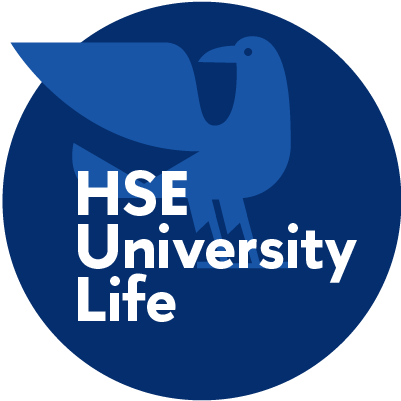- A
- A
- A
- ABC
- ABC
- ABC
- А
- А
- А
- А
- А
‘Our University Should Become a Trendsetter in Digital Education’
In June, Alexey Chukarin was appointed Senior Director for Digital Transformation at HSE University. We talked to Mr. Chukarin about the future of MyHSE Services Account and corporate apps, the new LMS, and the plans for HSE University’s technology infrastructure, as well as tried to understand what the university’s digital transformation will look like.
How would you assess the development of information technology at HSE University?
I haven’t seen any other university in Russia where the level of internal information technology would be higher. I can’t say that we are the gold standard of corporate IT, at least not yet, but for a university, our level is very high. In terms of infrastructure development, HSE University is a strong B student, and I would assess our internal and external services as B+ as well. Speaking about the usability of our platforms, there is still a lot to be done.
We also have certain issues with business processes. For example, the chain of approval for documents is too long; this is an area where the rector has asked my colleagues and I to focus our efforts in particular.
Will you be shortening this chain of approval?
It will be both shortened and automated. In fact, digital transformation is not only automation, which is actually in good shape at HSE University, but more importantly, optimization. For example, we’ll be looking at the number of phases that a document goes though during approval. I believe that we can cut the number of administrative procedures at least by half.
What do you think about MyHSE Services Account?
In terms of technology, it’s a good solution, and our colleagues did a great job creating a universal form and joining intra-university services to it. This is a big achievement not only for universities, but for big companies as well.
But from a user perspective, it is far from perfect. I’m not talking about the visual style per se, but rather about the experience of using these interfaces.
What has been implemented in the MyHSE Account in terms of user experience is not really focused on the user. This is a case when the IT crowd thought and said: ‘We know exactly what to do.’
The MyHSE Services Account is one of the issues on my immediate agenda. Along with the information policy staff, we will be seriously re-developing it and conducting focus groups that include teaching and administrative staff, as well as students. In all likelihood, the personal profile will appear differently for different users. And most importantly, it will be adapted for mobile devices.
Will the My HSE app change?
I don’t really like the recently introduced version. A lot of effort and resources were invested in it. My colleagues and I will be looking for a good way to preserve these investments, but it will definitely be changing.
Most likely, we will not be moving towards one mobile app. I see it as a combination of different monofunctional products published on AppStore and Google Play.
A good example is Yandex. You can choose Yandex.Food, Yandex.Taxi, or Yandex.Music – this is convenient, since you only use the function you need at a given time. We will attack this problem thoroughly, but we’ll probably end up making separate apps for learning (learning materials, online student’s record book), for back-office tasks, and so on.
We are going to launch one of the apps with basic functions in autumn. We’ll then see what has to be transferred from the personal profile, or what is not needed at all.
Is it possible to recruit students to take part in this work?
We’ll see whether the student community is ready for this. I’m thinking about creating open interfaces and providing access to any volunteers as long as we can comply with information security rules and requirements. At first, this can be done through trial sessions, and then, if we have positive feedback from testers, the app can be launched.
The IT Office will provide them an opportunity to work with data and infrastructure, publish apps on AppStore and Google Play, provide space at the data centre – in other words, provide the maximum comfortable conditions, so that students don’t have to maintain the apps at their own expense in addition to developing them.
HSE University already has a student app, HSE App. What does its future look like, from your perspective?
I believe in the following approach: if someone has done our job and has done it well, since it is popular among students and teachers, then we are interested in providing developers as many opportunities as possible to let this app continue working.
I am not sure it is perfect in terms of information security, but that’s a detail that can be discussed with students. I believe we will reach mutual understanding. If the app has a good track record, has all the right functionality, and is popular among students and teachers, the IT Office certainly won’t interfere with development of the HSE App, HSE App 2, or HSE App 3.
But we will be setting requirements in terms of what can and must be in these apps. For example, an important requirement will be particular attention to personal data protection.
What can be expected for the LMS?
Today, the university has two LMS systems: eFront, which has existed for about a decade, and a more modern one, Moodle. The eLearning Office and, to a certain extent, the Institute of Education work in the latter one, while eFront is a classic that has been used by all of HSE.
Yaroslav Kuzminov has tasked us with abandoning these scattered pieces and creating a united platform.
Modern technologies are far ahead of what is being used at the university. Even the recent version of Moodle has a number of new functions as compared to what is used at HSE University.
We are going to create a new type of online learning system – Smart LMS. It will support cutting-edge technologies in learning, testing and teacher-student interaction, helping restore the fragments of knowledge missed by the student for some reason, but doing so on a selective basis.
We are going to create a new type of online learning system – Smart LMS. It will support cutting-edge technologies in learning, testing and teacher-student interaction, helping restore the fragments of knowledge missed by the student for some reason, but doing so on a selective basis.
When do you expect this to happen?
The new LMS won’t appear before the end of the year. We can proceed with the band-aid approach, but I don't want a third Frankenstein appearing next to eFront and Moodle, which would cause negative reactions and remain at the bottom in terms of user ranking. It’s easier to do nothing than that.
I think that Smart LMS will be fully operational by the 2021/22 academic year, and by 2020/21 I hope to have the first release issued.
Is HSE University going to switch fully to online lectures, and how would it be implemented technically in the new LMS?
This is question is more for teaching departments than for digitalizers, but I believe that there are always materials that should be delivered in person.
Today, you can take a whole course on Coursera, and we are close to publishing 99% of lecture materials online. But in terms of participation effect, social networking, opportunities to ask questions beyond the syllabus, and having a wider perspective on the course topic, traditional lectures still win.
Online communication will never replace face-to-face contact. This is my opinion, but live teacher-student communication should stay regardless of the super technologies we have.
What plans are there for computer classes and technical infrastructure at HSE University in general?
The new group of buildings on Pokrovka has a record number of computer classes. The equipment that is now being purchased there for students will be more than enough in the foreseeable future.
In the near future, we are going to review the equipment standards for display classrooms and staff workplaces. This year, we are using the equipment that the university already has and starting next year, we will discuss targeted procurement, both for computers and peripheral devices.
The IT Office uses the resources allocated for equipment rather effectively, but it often faces a hard choice: to make one good project, or several poor ones.
Focusing on the Rector’s assignments in advanced digitalization, our university should become a trendsetter in digital education. That’s why we’ll have to review our rules and infrastructure principles. We won’t be able to build a digital university with poor projects, even if we try very hard.
We can talk about the bright future a lot, but if we have poor Wi-Fi and a 14” CRT monitor, that will be the level of our digitalization.
By the way, what is happening with Wi-Fi?
The university is perfectly equipped with a network of Wi-Fi spots, but the speed largely depends on the number of users in the network. There are some clear tools to rebalance traffic, and we are going to take advantage of them.
On the one hand, this is an issue of purchasing traffic from operators, but on the other hand, Wi-Fi spots are located with maximum density for line planning. If we put them closer, there will be interference and connection quality will drop. We’ll have to solve this problem by means of dividing into different networks, small zones with reinforced connection in recreation zones and places where mass gatherings take place – where a maximum increase in quality is needed.
We won’t be able to solve this issue by September 1, but I believe that we will have redesigned the Wi-Fi network by the end of the year.
Two years ago, authentication was introduced at dorms, which provoked quite a bit of discussion in the university community. What do you think about it?
The university is absolutely right to follow the regulator’s requirements. The national regulations of authorization and authentication for any users connecting to Wi-Fi are rather strict, so we have no choice.
Will the internet connection quality change?
The expansion of channels used at dorms by 5-6 times will solve the problem with traffic-intensive resources. But this problem has to be further investigated.
And the main question – how can we explain to our readers what digital transformation is?
My answer to this question is that it is creating new tools for the university, which not only digitalize the existing processes, but change their logics, optimize them, and make them more precise and convenient.
For teachers and students, this means an opportunity to use digital technology to pack the teaching contents, to adjust the individual study tracks, and to customize the student’s educational experience.
For administrators, it means an opportunity to interact with data continuously and quickly, and to make decisions based on them. For communicators, this is an opportunity to target and adjust the news for different audiences.
Our task is to create these tools and deliver them to all the interested teaching, academic and administrative departments. But, again, this won’t be happening in the format ‘The IT crowd invented a way for everyone to live well’. We are developing these tools together with our customers inside the university.
Interview by Ivan Chernyavsky and Anna Reznikova
Bio

HSE University Senior Director for Digital Transformation

